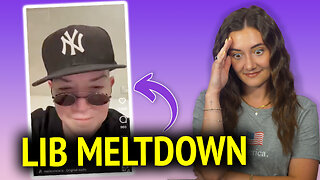Birdie Compilation
These are all adorable Parrots with many funny stories. Besides their wings and feathers, a major characteristic of a parrot is the beak. Parrots are very adept at using their beak, it’s almost like a hand for them. They use it to climb, hold things, manipulate things, and, of course, to eat! Beaks grow constantly, and if a parrot’s diet and habitat don’t help keep the beak worn down, it must be trimmed to prevent overgrowth.
Parrots have a long life span compared to many other pet species. Small birds like budgies and lovebirds aren’t considered senior until 6 years of age, cockatiels aren’t senior until around 12 years of age, and large birds like Amazons, macaws, cockatoos, and African greys aren’t considered senior until they reach around 30 years old. And parrots of all sizes can live many years as seniors. This means that adding a parrot to your family is a commitment for many years. Parrots are birds, and female birds can lay eggs whether or not a male bird is present; eggs just don’t hatch if unfertilized. Season and environment affect breeding activity. Consult your avian veterinarian for information on what to expect regarding egg laying with your parrot’s species.
A bird’s crop is a temporary storage pouch that’s located along the esophagus between the mouth and proventriculus/stomach. The crop is useful, but it’s also subject to crop disease or impaction.
Birds have feathers and feathers molt (shed). This means that new feathers are needed to take the place of lost feathers. That’s where blood feathers come in. Blood feathers are actively growing feathers. They are shorter than mature feathers and have a softer shaft that’s reddish, blue, or black near the base instead of being white. If a growing feather is bent or cut, it could bleed. Sometimes, blood feathers will break and bleed if a bird falls or thrashes about inside the cage. In this case, you’ll have to pull the feather out from its root to get it to stop bleeding. Ask your avian veterinarian how to handle the situation if your bird suffers a broken blood feather.
Wing feather trims must be done with care. Never trim blood feathers. It’s a good idea to leave feathers on either side of a blood feather intact, which will help protect it.
As mentioned before, parrots have zygodactyl feet. These allow them to grip and climb. Perches are important to parrot foot health. Providing numerous perches in and out of the cage with the proper diameter and various textures promotes good foot health. So, too, does keeping the nails trimmed. Regularly trimming nails also minimizes scratches you might suffer while holding your parrot. Your avian veterinarian or a professional bird groomer can perform nail trims or show you how to do it.
If there were a popularity contest among the companion parrots, the top contenders would likely be cockatiels, budgerigars (budgies/parakeets), African greys, conures, cockatoos, Amazons, lovebirds, parrotlets, and those from the genus Poicephalus, such as Senegal and Meyer’s parrots. Popularity could be due to size, personality, looks, vocalizations, or any number of factors. With so many pet parrot species, people can investigate and find the feathered companion who best blends with their home and lifestyle.
Thank you for watching my video
-
 0:08
0:08
Funny Channel
11 months agoTheory and Practical are totally different 😂
20 -

Alex Zedra
4 hours agoLIVE! Girls Scary Game Night
28.8K8 -
 LIVE
LIVE
Fresh and Fit
8 hours agoThe End Of An Era. We Are Leaving YouTube.
3,601 watching -
 34:46
34:46
Man in America
10 hours agoSHOCKING Proof: Grocery Prices Tripled in Just Two Years!!! w/ Dr. Kirk Elliott
31.9K16 -
 6:52
6:52
Chrissy Clark
1 day agoTikToker Melts Down Over Supreme Court Ruling
23.6K29 -
 1:29:44
1:29:44
Kim Iversen
6 hours agoSCOTUS Backs Corporate Censorship Powers. RFK Jr Hit Piece Hits New Low
56K59 -
 1:30:00
1:30:00
Deprogrammed with Keri Smith
15 hours agoAmerica! F@%&! Yeah! - America vs Commies in Film - LIVE Popped Culture
34.4K -
 20:37
20:37
ROSE UNPLUGGED
13 hours ago4th of July Message and Kelsey Grammer Interview
37.5K2 -
 50:06
50:06
The Charlie Kirk Show
5 hours agoThe Secret History of Communist Revolutions ft. Jack Posobiec and Joshua Lisec
72K17 -
 1:49:48
1:49:48
Glenn Greenwald
8 hours agoPresidential Immunity's Long History; Hysteria Radically Distorts SCOTUS Ruling; Dem Oligarchs Forcing Biden Out of 2024 Race | SYSTEM UPDATE #292
95.7K89